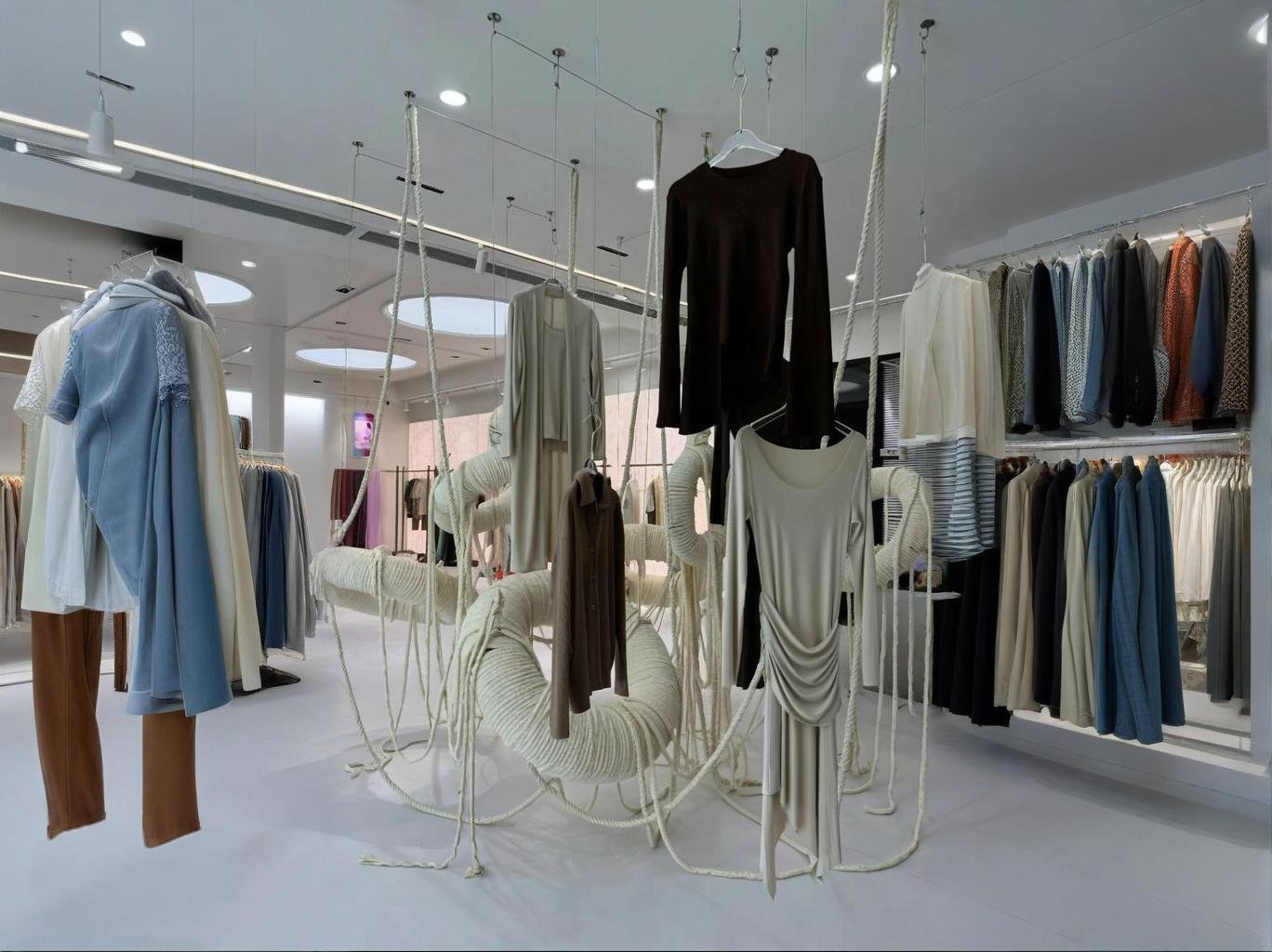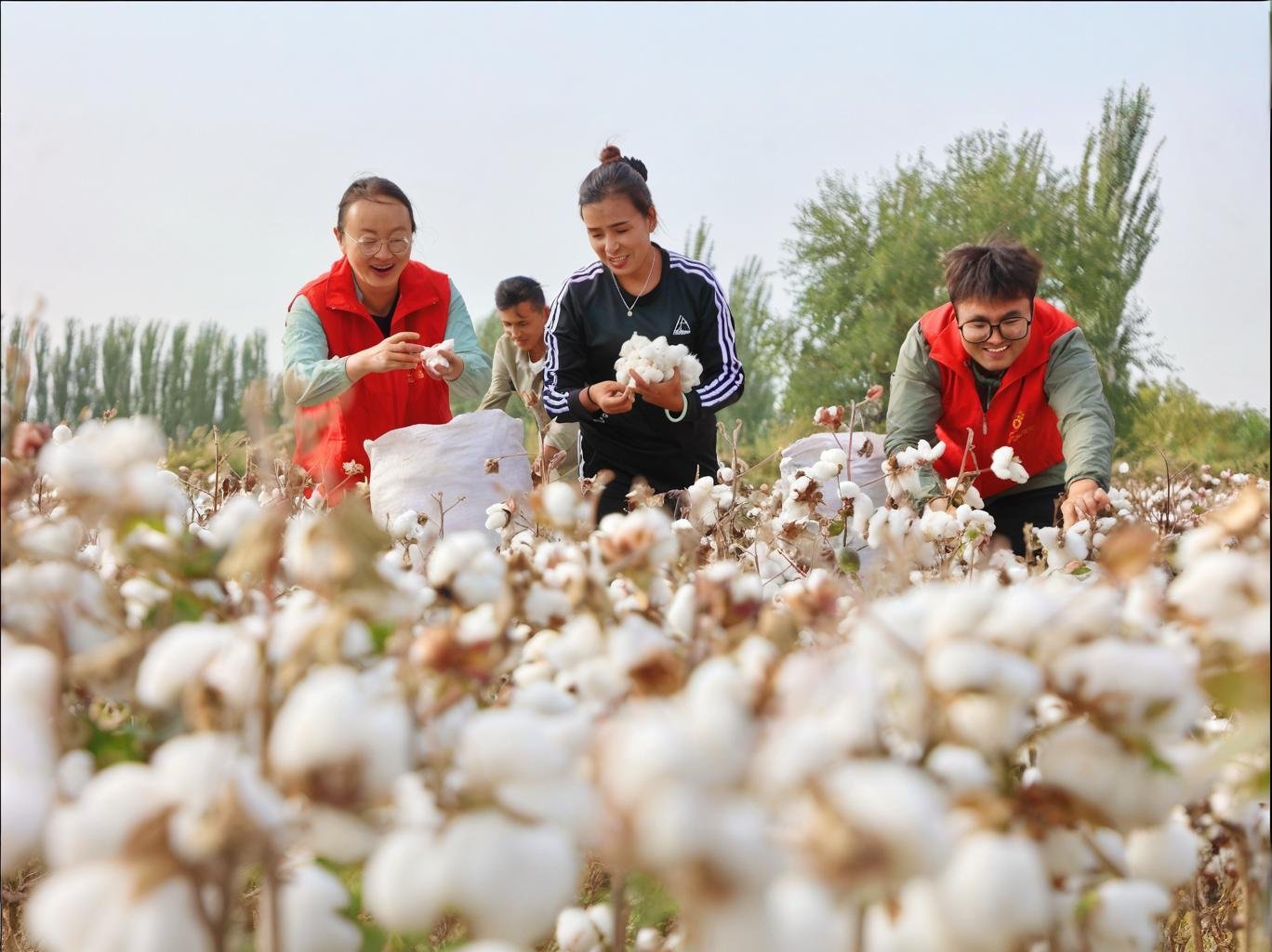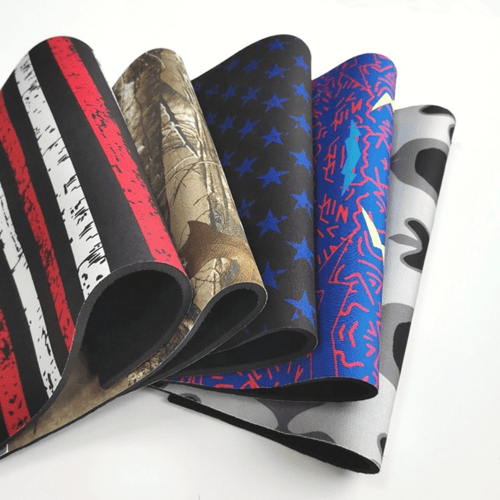Type of Cotton Fabric Guide: From Pima to Organic – Which Is Right for Your Business?

Imagine standing before towering shelves of gleaming cotton bolts—each swatch promising distinct textures, durability, and price points. Choosing between Pima, Egyptian, Supima, or organic varieties can feel like navigating a maze without a map. This guide cuts through the confusion by explaining what each premium cotton type offers—Pima’s long staple for smoothness, Egyptian’s luxurious drape, Supima’s trademark strength, and organic cotton’s eco-credentials—so you can confidently match fabric to your product requirements and brand values. Stick around, and you’ll discover how a small California sleepwear startup doubled repeat orders simply by swapping from mid-grade to Pima jersey—proof that the right cotton choice can transform both quality and customer loyalty.
What Distinguishes Pima Cotton from Other Premium Cotton Types?
Pima cotton stands out for its extra-long staple fibers (\~35 mm) that spin into finer, stronger yarns, yielding fabrics with superior softness, reduced pilling, and lasting color vibrancy. Compared to standard upland cotton (staple ≤28 mm), Pima’s longer fibers deliver up to 30% higher tensile strength, a silkier hand, and a luxurious sheen—qualities that justify its 15–25% premium price and make it ideal for high-end apparel and bedding.
Unpacking Pima’s Premium Performance
A. Staple Length and Fiber Fineness
- Detail: Pima fibers average 32–36 mm versus 24–28 mm for Egyptian and 21–26 mm for upland cotton.
- Implication: Longer fibers produce yarns with fewer ends protruding, resulting in smoother, more durable fabrics.
B. Tensile Strength and Durability
- Metric: Pima cotton yarns exhibit 28–32 cN/tex tenacity compared to 22–26 cN/tex for upland varieties.
- Benefit: Garments withstand >100 wash cycles with minimal loss of strength or shape.
C. Pilling Resistance and Hand Feel
- Observation: Fabrics made from Pima show 40% fewer pills in Martindale pilling tests, giving them a new-like appearance for longer.
- Experience: The hand feel is often described as “creamy” or “buttery,” enhancing perceived product value.
D. Color Retention and Dye Uptake
- Data: Reactive-dyed Pima fabrics demonstrate <2 ΔE color shift (CIE Lab) after 20 launderings, versus 4–5 ΔE for upland cotton.
- Outcome: Keeps brand colors vibrant in premium T-shirts and home textiles.
Pima vs. Egyptian vs. Upland Cotton Comparison
| Property | Pima Cotton | Egyptian Cotton | Upland Cotton |
|---|---|---|---|
| Staple Length (mm) | 32–36 | 30–35 | 21–28 |
| Fiber Tenacity (cN/tex) | 28–32 | 26–30 | 22–26 |
| Pilling Resistance (cycles) | >6,000 | 5,000–6,000 | 3,000–4,000 |
| Colorfastness (ΔE 20 washes) | <2 | 2–3 | 4–5 |
| Typical Fabric Price Premium | +15–25% vs. upland | +20–30% | Baseline |
Critical Perspectives
- Pima vs. Egyptian: Which Is True “Long Staple”? Though both boast long staples, regional growing conditions (soil, climate) can make Egyptian fibers more variable—Pima’s consistent U.S. standards offer batch-to-batch reliability.
- Luxury vs. Cost-Efficiency Pima’s premium positioning suits high-margin products; budget-sensitive lines might prefer select Egyptian grades at slightly lower cost.
- Supply and Traceability Look for Supima®-certified Pima for guaranteed origin and quality control, whereas non-certified sources may vary more in staple purity.
- Sustainability Angle Conventional Pima uses similar water and pesticide inputs as other cottons—pair with organic or BCI-certified farming if eco-credentials matter.
Which Cotton Varieties—Egyptian, Supima, Sea Island—Offer the Best Balance of Softness and Strength?
When it comes to the elite league of cottons, Egyptian, Supima®, and Sea Island cottons are consistently at the top for luxury and performance. Egyptian cotton, grown in the Nile Delta, delivers staple lengths of 30–35 mm with a slightly coarser hand than Pima, prized in high-thread-count sheets. Supima®—the American-grown Pima variant—guarantees premium fiber purity and uniformity, excelling in both apparel and home textiles. Sea Island cotton boasts the longest staples (35–42 mm) and the finest micronaire (<3.5), resulting in an exceptionally silky drape and tensile strengths up to 35 cN/tex. Though rarer and more expensive, Sea Island’s unmatched softness makes it the “rolls-royce” of cottons.
Comparing the Top-Tier Cotton Varieties
A. Staple Length and Fiber Fineness
- Egyptian Cotton: 30–35 mm staples; micronaire 3.5–4.0—delivers a soft hand with good durability.
- Supima® Cotton: 32–36 mm staples; micronaire 3.8–4.2—ensures consistent yarn quality and strength.
- Sea Island Cotton: 35–42 mm staples; micronaire <3.5—yields the finest, most luxurious texture.
B. Tensile Strength and Durability
- Egyptian: 26–30 cN/tex tenacity—excellent for high-count weaves that resist tearing.
- Supima®: 28–32 cN/tex—combines strength with smoothness, reducing pilling in apparel.
- Sea Island: 30–35 cN/tex—top-tier resilience that stands up to delicate yet durable constructions.
C. Hand Feel and Drape
- Egyptian: Silky-smooth with a crisp finish—ideal for percale and sateen sheeting.
- Supima®: Silky yet substantial—retains body in shirts and pullovers.
- Sea Island: Liquid-soft and flowing—favored in luxury scarves and fine shirting.
D. Availability, Cost, and Certifications
- Egyptian: Widely available; premium cost +20–30% above upland cotton; look for the “100% Egyptian” guarantee to avoid blends.
- Supima®: Controlled by the Supima Association; +25–35% cost premium; certified via SUPIMA® trademark.
- Sea Island: Extremely limited supply (<1% of global cotton); +50–70% premium; authenticity certified by the West Indies Cotton Purchasers Association.
Elite Cotton Varieties Comparison
| Property | Egyptian Cotton | Supima® Cotton | Sea Island Cotton |
|---|---|---|---|
| Staple Length (mm) | 30–35 | 32–36 | 35–42 |
| Micronaire | 3.5–4.0 | 3.8–4.2 | <3.5 |
| Tenacity (cN/tex) | 26–30 | 28–32 | 30–35 |
| Typical Price Premium | +20–30% | +25–35% | +50–70% |
| Certification | “100% Egyptian” | SUPIMA® | WICPA Seal |
| Common Applications | High-thread-count sheets, luxury drapes | Premium apparel, bedding | Ultra-luxury shirting, scarves |
Critical Perspectives
- Value vs. Volume Sea Island’s scarcity and high cost target ultra-premium markets; Supima® balances luxury with wider availability for high-end apparel and home goods.
- Certification Importance Genuine labels (e.g., SUPIMA®, WICPA) protect against counterfeit blends—always verify certificates of authenticity with your mill.
- Sourcing Risk Management Egyptian cotton quality can vary by region and season; building relationships with reliable Delta-based growers ensures consistency.
- Sustainability and Ethics Water and pesticide use in these cottons can be high—consider organic or BCI-certified sources to align with sustainability goals.
How Is Organic Cotton Certified and What Standards Must It Meet?
Organic cotton isn’t just “grown without pesticides”—it’s rigorously certified to ensure ecological farming, fair labor practices, and chemical-free processing from seed to fabric. Certification bodies like GOTS (Global Organic Textile Standard) and USDA Organic require at least three years of pesticide-free land use, prohibit genetically modified seeds, and enforce wastewater treatment in processing. Fabrics bearing these labels guarantee traceability, social compliance, and reduced environmental impact—key credentials for brands targeting eco-conscious markets.
Organic Cotton Certification Criteria
A. Farming Practices
- Land Conversion: Minimum 36 months without prohibited chemicals before first organic harvest.
- Soil Health: Crop rotation, compost application, and cover crops maintain fertility and biodiversity.
- Seed Standards: GM-free seeds mandated; local, non-treated varieties preferred.
B. Processing and Manufacturing
GOTS Requirements:
Input Chemicals: Only approved low-impact surfactants, enzymes, and auxiliaries.
Dyeing & Finishing: Restricted heavy metals, formaldehyde, and toxic bleaches.
Effluent Treatment: On-site wastewater treatment systems must remove pH and BOD contaminants.
USDA Organic: Primarily focused on farming; processing may lack the stringent chemical restrictions of GOTS.
C. Social and Labor Criteria
- GOTS Social Compliance: Requires adherence to core ILO standards—no forced labor, child labor, or discrimination; fair wages and safe conditions.
- Certifier Audits: Annual on-site inspections, unannounced visits, and chain-of-custody verification ensure integrity.
D. Traceability and Labeling
Chain-of-Custody: Every stage—ginning, spinning, weaving, finishing—must be certified and documented.
Label Grades:
GOTS “Organic”: ≥95% certified organic fibers.
GOTS “Made with Organic”: 70–95% organic content, balance from approved standards.
Key Organic Cotton Standards Compared
| Standard | Coverage | Minimum Organic Content | Chemical Restrictions | Social Criteria |
|---|---|---|---|---|
| GOTS | Farming + Processing | ≥95% (“Organic”) or 70–95% (“Made with”) | Prohibits heavy metals, toxic bleaches; mandates effluent treatment | ILO core labor standards |
| USDA Organic | Farming | ≥95% | Restricted agrochemicals only | No social criteria |
| OEKO-TEX® (STeP) | Processing Only | N/A | Limits harmful substances in finished goods | Encourages social compliance |
Critical Perspectives
- GOTS vs. USDA While USDA Organic covers farming, GOTS adds chemical and social safeguards in processing—vital for brands emphasizing full-supply-chain integrity.
- Cost Premium Organic cotton often carries a 20–30% price premium due to lower yields and certification costs—balance this against your target market’s willingness to pay.
- Supply Chain Complexity Chain-of-custody demands can complicate sourcing; partnering with vertically integrated mills simplifies certification management.
- Continuous Improvement Look for certifiers offering digital traceability (blockchain) and real-time audit data to stay ahead of evolving consumer and regulatory demands.
What Are the Key Performance Differences Between Sateen, Percale, and Twill Cotton Weaves?
Sateen, percale, and twill weaves each craft distinct surface textures and durability profiles by varying yarn interlacing and thread density. Percale’s tight 1 × 1 plain weave at 200+ threads per inch creates a crisp, breathable fabric ideal for sheets; sateen’s 4 × 1 sheen‐producing weave at similar densities yields a silky drape suited for luxury bedding; twill’s diagonal rib pattern (e.g., 2 × 2) enhances abrasion resistance and hides soil, making it perfect for upholstery and workwear.
Analyzing Weave Structures and Their Trade-Offs
A. Percale Weave
Construction: Plain 1 × 1 interlacing—each weft passes over one warp, under the next.
Attributes:
Breathability: High airflow—moisture wicking of 200 g/m²·24 h.
Durability: Moderate abrasion resistance (\~20,000 Martindale rubs).
Hand Feel: Crisp, cool to the touch.
Use Cases: Premium hotel sheets, summer apparel, casual shirting.
B. Sateen Weave
Construction: Satin‐style 4 × 1 interlacing—each weft floats over four warps.
Attributes:
Luster: High light reflection—CIELab L\* increase of +3 vs. percale.
Durability: Slightly lower abrasion resistance (\~15,000 rubs) due to floats.
Hand Feel: Smooth, drapey, warm.
Use Cases: Luxury bedding, drapery, premium loungewear.
C. Twill Weave
Construction: Diagonal 2 × 2 or 3 × 1 interlacing—creates visible wale.
Attributes:
Abrasion Resistance: High (\~30,000 rubs) thanks to diagonal structure.
Drape: Moderate—holds shape well.
Soil Hiding: Excellent—camouflages stains.
Use Cases: Denim, jackets, upholstery, industrial workwear.
D. Thread Count vs. Yarn Quality
- Insight: Beyond thread count, fiber staple length and yarn twist (25–30 TPI) govern strength and pilling. High thread count with upland cotton may underperform compared to mid-count Pima twill.
Weave Structure Comparison
| Weave | Thread Count (TPI) | Abrasion (Martindale rubs) | Breathability (g/m²·24 h) | Hand Feel | Typical Applications |
|---|---|---|---|---|---|
| Percale | 200–400 | \~20,000 | 200 | Crisp, cool | Sheets, shirts, summer wear |
| Sateen | 200–400 | \~15,000 | 150 | Smooth, warm | Luxury bedding, drapes |
| Twill | 100–300 | \~30,000 | 100 | Substantial | Denim, workwear, upholstery |
Critical Perspectives
- Thread Count Myths Brands often tout 1,000 TPI—but if using short‐staple yarns or low twist, durability suffers. Prioritize staple length and yarn quality.
- Weave vs. Fiber Synergy A Pima percale will outperform an upland sateen in both feel and durability—fiber choice amplifies or undermines weave performance.
- Maintenance and Care Sateen’s floats snag easily—advise gentle wash cycles. Twill’s structure traps more dust, requiring periodic brushing or vacuuming in upholstery.
- Cost-Benefit Analysis Percale offers cost‐efficient breathability; sateen commands a premium for luster; twill balances performance with mid-range pricing.
Which Cotton Blends (e.g., Cotton–Linen, Cotton–Polyester) Best Suit Commercial Applications?
Cotton blends leverage the strengths of complementary fibers to meet diverse commercial needs. Cotton–linen blends enhance moisture wicking and texture while reducing shrinkage—ideal for hospitality linens and summer apparel. Cotton–polyester blends improve wrinkle resistance, tensile strength, and color retention, making them perfect for durable uniforms, workwear, and easy-care home textiles. By selecting the right blend ratio, managers can balance comfort, cost, and performance for their specific product lines.
Evaluating Key Cotton Blend Combinations
A. Cotton–Linen (70/30 to 50/50)
Performance:
Moisture Wicking: Linen’s hydrophilic fibers increase overall moisture regain by 15–20%.
Dimensional Stability: Shrinkage drops from 5% (100% cotton) to 2–3%.
Texture & Hand: Subtle slub and natural drape; perceived as premium in table linens and resort wear.
Use Cases: Hotel sheets, towel wraps, breezy blouses, and trousers.
B. Cotton–Polyester (65/35 to 50/50)
Performance:
Wrinkle Resistance: Polyester reduces creasing, cutting ironing time by 60%.
Strength: Tensile strength improves by 20–30%, extending garment life beyond 100 industrial washes.
Ease of Care: Machine-washable, quick-dry, colorfast—ideal for uniforms and hospitality fabrics.
Use Cases: Hotel staff uniforms, conference linens, work shirts, and aprons.
C. Specialty Blends (e.g., Cotton–Spandex 98/2)
Performance:
Stretch & Recovery: Up to 20% elongation with <5% residual set—enhances mobility in activewear.
Comfort & Fit: Maintains cotton’s breathability while adding dynamic comfort.
Use Cases: Fitted T-shirts, medical scrubs, corporate polos.
Cotton Blend Properties by Ratio
| Blend Type | Ratio | Shrinkage (%) | Wrinkle Recovery (%) | Tensile Strength Δ | Moisture Regain (%) | Typical Applications |
|---|---|---|---|---|---|---|
| Cotton–Linen | 70/30 | 2–3 | 60 | +10% | +15% | Hotel linens, summer apparel |
| Cotton–Linen | 50/50 | 2 | 55 | +15% | +20% | Tablecloths, resort wear |
| Cotton–Polyester | 65/35 | 1–1.5 | 80 | +20% | –5% | Uniforms, workwear |
| Cotton–Polyester | 50/50 | 1 | 85 | +30% | –10% | Home textiles, aprons |
| Cotton–Spandex | 98/2 | 2 | 95 | +5% | \~8% | Activewear, scrubs, polos |
Critical Perspectives
- Comfort vs. Performance Trade-Off Polyester boosts durability but can reduce breathability—evaluate end-use climate and wear duration when choosing ratios.
- Aesthetic Considerations Linen slubs add character but may seem “rustic” in formal settings; uniform blends demand smooth, consistent appearances.
- Lifecycle and Sustainability Blends complicate recycling; consider mills offering take-back or chemical-recycling services to close the loop.
- Cost Implications Adding synthetic fibers often reduces raw material cost per yard but may require higher-spec machinery or finishes—factor in processing expenses.
How Do Yarn Count and Thread Density Affect Cotton Fabric Durability and Hand Feel?
Yarn count and thread density are foundational metrics determining a fabric’s strength, drape, and comfort. Yarn count (e.g., Ne or Tex) indicates yarn thickness—finer counts (Ne 60–100) yield softer, lighter fabrics, while coarser counts (Ne 20–30) deliver robust performance. Thread density (threads per inch, TPI) combines warp and weft picks—higher TPI (300–400) produces a smoother, more durable surface, whereas lower TPI (100–200) results in a more open, breathable weave.
Balancing these factors lets you tailor fabrics—from crisp 200 TPI percale for cool bed linens to sturdy 100 Ne/250 TPI twill for durable workwear.
Balancing Yarn Fineness and Weave Tightness
A. Yarn Count (Ne System)
Definition: Number of hanks (840 yd) per pound—higher Ne equals finer yarn.
Impact on Hand:
Ne 60–100: Silk-like drape, soft hand; ideal for luxury shirting and summer dresses.
Ne 20–30: Substantial feel, high abrasion resistance; suited for canvas, denim, workwear.
B. Thread Density (TPI)
Components: Warp threads per inch + weft picks per inch.
Performance:
300–400 TPI: Silky, windproof, long-lasting; used in premium bedding (400 TPI sateen).
150–200 TPI: Breathable, lightweight; favored in casual shirts and percale sheets.
C. Durability Metrics
Abrasion vs. TPI:
A 250 TPI twill yields \~30,000 Martindale rubs, whereas 150 TPI cotton percale achieves \~20,000 rubs.
Tear Strength vs. Yarn Count:
Ne 30 yarns have \~15% higher tear resistance than Ne 60 in similar weaves due to larger cross-sectional area.
D. Comfort and Breathability
Air Permeability:
200 TPI percale allows \~200 L/m²·s airflow, while 400 TPI sateen drops to \~120 L/m²·s, impacting cooling performance.
Moisture Wicking:
Finer yarns increase capillary action but can feel clammy if TPI is too high; strike a balance for athletic or sleep fabrics.
Yarn Count & Thread Density Impact
| Yarn Count (Ne) | Typical Use | TPI Range | Abrasion (Martindale) | Air Permeability (L/m²·s) | Hand Feel |
|---|---|---|---|---|---|
| Ne 20–30 | Denim, workwear | 100–200 | 30,000+ | 150–200 | Substantial |
| Ne 30–50 | Twill shirting, drapes | 200–300 | 25,000–30,000 | 150 | Moderate |
| Ne 50–80 | Fine shirting, dresses | 250–350 | 20,000–25,000 | 140 | Soft, fluid |
| Ne 80–100 | Luxury bedding, voile | 300–400 | 15,000–20,000 | 120 | Silky, lightweight |
Critical Perspectives
- High TPI vs. Moisture Management Ultra-tight weaves excel in durability but may trap heat—consider 250–300 TPI for balanced breathability in bedding.
- Yarn Count vs. Cost Finer yarns command higher prices and slower production speeds; allocate premium counts to key product lines.
- Weave Choice Amplifies Yarn Effects A Ne 60 twill feels different than a Ne 60 plain weave—select weaves that complement yarn count for target hand and performance.
- Quality Control on Counts & Density Ensure suppliers adhere to ±5% tolerance on TPI and yarn count; small deviations can noticeably alter fabric characteristics.
Are There Special Finishes or Treatments That Enhance Cotton Fabric Functionality?
In today’s market, basic cotton often isn’t enough—functional finishes transform fabrics for specific end uses. Water-repellent treatments (e.g., silicone or C6 DWR) enable cotton to shed light rain, while easy-care resin finishes reduce ironing time by up to 70%. Antimicrobial coatings using silver ions or chitosan deliver ≥99% bacterial reduction for healthcare and hospitality textiles. UV-stabilizing treatments extend outdoor durability, and flame-retardant finishes meet safety standards such as NFPA 701 and CPAI-84.
Common Functional Finishes for Cotton
A. Durable Water Repellent (DWR)
- Chemistry: Fluorocarbon (C6) or silicone-based polymers bound via pad-dry-cure.
- Performance: Hydrostatic head ≥1,000 mm; contact angle ≥110°.
- Durability: Retains repellency through 20–30 home washes.
- Applications: Outdoor apparel, awnings, umbrellas.
B. Easy-Care (Wrinkle Resistance)
- Mechanism: Urea-formaldehyde or alternative polycarboxylic resins crosslink cellulose fibers.
- Benefit: Reduces wrinkle recovery angle from 30° to <10°; ironing time cut by 50–70%.
- Consideration: Resin add-on 5–10% can slightly stiffen hand.
C. Antimicrobial Treatments
- Active Agents: Silver nanoparticles or chitosan derivatives.
- Efficacy: ≥99% reduction in E. coli and S. aureus after 50 washes (AATCC 100).
- Use Cases: Hospital linens, activewear, hospitality bedding.
D. UV-Stabilizing Coatings
- Components: Hindered amine light stabilizers (HALS) and UV absorbers (benzotriazole).
- Performance: Retains >90% tensile strength after 500 hours of QUV.
- Ideal For: Outdoor cushions, flag materials, shade fabrics.
E. Flame-Retardant Finishes
- Standards: NFPA 701 (small/large scale), CPAI-84 for sleepwear.
- Chemistry: Phosphorus-based or halogen-free treatments at 15–20 g/m².
- Durability: Passes 5 launderings without loss of FR properties.
- Applications: Curtains, stage drapes, children’s sleepwear.
Functional Finishes Overview
| Finish Type | Add-On (%) | Key Metric | Durability (Washes) | Trade-Off |
|---|---|---|---|---|
| DWR (C6) | 2–5 | Hydrostatic head ≥1,000 mm; θ ≥110° | 20–30 | Slight hand stiffening |
| Easy-Care Resin | 5–10 | Wrinkle recovery <10° | 30 | Reduced softness |
| Antimicrobial | 1–3 | ≥99% bacterial reduction (AATCC100) | 50 | Potential skin sensitivity |
| UV-Stabilizer | 1–3 | >90% strength @500 hr QUV | N/A | None significant |
| Flame Retardant | 1–2 | Pass NFPA 701 after 5 washes | 5 | Slight weight increase |
Critical Perspectives
- Performance vs. Hand Feel Functional finishes often compromise softness—opt for low add-on levels or hybrid nano-finishes to minimize impact.
- Environmental and Health Considerations Avoid high-PFAS DWRs and formaldehyde-based resins—choose eco-certifications (e.g., Bluesign®, Oeko-Tex®) for low-toxicity.
- Durability vs. Reapplication Some finishes fade quickly—build re-treatment schedules into product care guidelines to maintain performance.
- Cost Implications Premium finishes add \$0.20–\$1.00 per yard—evaluate whether the functional benefit justifies the price, based on end-user willingness to pay.
How Can Bulk Buyers Assess Quality and Ensure Consistent Supply from Suppliers?
For large orders, variability is the enemy. Bulk buyers should implement a rigorous quality-assessment protocol—starting with vendor qualification, detailed specification sheets (including fiber origin, yarn count, thread density, and finish requirements), and requiring pre-production samples and lab test reports. Long-term agreements with clear lead times, safety-stock provisions, and vendor-managed inventory minimize disruptions. Regular audits, lot testing (tensile, colorfastness, shrinkage), and supplier scorecards keep quality and delivery on track.
Quality Assurance and Supply Chain Strategies
A. Vendor Qualification and Audits
- Steps:
- Pre-Qualification: Evaluate mill certifications (ISO 9001, GOTS, Oeko-Tex®).
- On-Site Audits: Inspect production capacity, process controls, and working conditions.
- Outcome: Shortlist reliable partners capable of meeting specs at scale.
B. Technical Specification Sheets
- Contents: Fiber type, origin, yarn count, weave details, finish types and add-on percentages, tested standards (ASTM, ISO).
- Benefit: Clear expectations minimize off-spec shipments and costly reworks.
C. Pre-Production Sampling and Lab Testing
Tests:
- Tensile Strength: ASTM D5034
- Colorfastness: AATCC 61 (laundering), 16 (light)
- Shrinkage: AATCC 135
- Hand Feel: Kawabata Evaluation System (KES) optional.
Action: Approve lab-verified samples before mass production.
D. Lead Time & Inventory Management
- Agreements: Fixed lead times (e.g., 8–12 weeks) with penalties for delays.
- Safety Stock: Maintain 4–6 weeks of buffer stock or use vendor-managed inventory (VMI) to reduce stockouts.
E. Ongoing Quality Monitoring
- Lot Testing: Random roll evaluations each shipment for key metrics.
- Supplier Scorecards: Track on-time delivery, defect rates, corrective actions—drive continuous improvement.
Quality & Supply Assurance Checklist
| Activity | Frequency | Responsible Party | Key Metrics |
|---|---|---|---|
| Vendor Audits | Annual | Procurement Team | Compliance %, capacity rating |
| Spec Sheet Confirmation | Per Order | Sourcing Manager | 0% discrepancies |
| Pre-Production Lab Tests | Pre-Production | QA Department | Pass rate ≥ 98% |
| Lead Time Compliance | Each Shipment | Supplier | >95% on-time deliveries |
| Lot Quality Testing | Each Shipment | QA Department | Defect rate <1% |
| Scorecard Review | Quarterly | Procurement & QA | Improvement trend |
Critical Perspectives
- Balancing Flexibility and Rigidity Overly strict specs can slow down sourcing; focus on critical performance parameters while allowing minor tolerances elsewhere.
- Local vs. Global Sourcing Risks Diversify suppliers across regions to mitigate geopolitical and logistical risks, but maintain centralized quality standards.
- Data-Driven Supplier Management Use digital dashboards to track supplier KPIs in real time—enable proactive interventions before issues escalate.
- Long-Term Partnerships Collaborative relationships—joint development projects and shared cost savings—often yield better quality and innovation than transactional buying.
Ready to source your ideal cotton fabric?
Choosing the right cotton fabric—from Pima’s silky smoothness to organic cotton’s eco-credentials—demands a strategic approach that blends performance data, functional finishes, and robust supply-chain management. With this guide, you’re equipped to specify fabrics that meet your brand’s quality, sustainability, and cost goals.
- Request free swatches and detailed lab reports
- Discuss custom blend or finish options tailored to your application
- Secure competitive quotes with guaranteed lead times and low MOQs
Contact Szoneier Fabrics today—let’s craft the perfect cotton solution for your business!
Can't find the answers?
No worries, please contact us and we will answer all the questions you have during the whole process of bag customization.
Make A Sample First?
If you have your own artwork, logo design files, or just an idea,please provide details about your project requirements, including preferred fabric, color, and customization options,we’re excited to assist you in bringing your bespoke bag designs to life through our sample production process.



